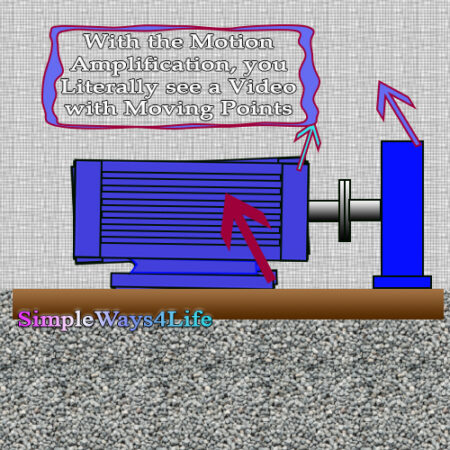The technology we are going to chat about today has its patent recorded in in 2016 (US20160217587A1). It was first introduced by its inventor Jeffrey Robert Hay in his Doctoral Dissertation on 2011 at University of Louisville. It came under the title “High dynamic range imaging for the detection of motion.“
Is Maintenance really evolving?
Unfortunately the maintenance strategies, programs & tactics do not evolve regularly. Even the management & leadership techniques are almost the same since decades ago. What evolves are the techniques needed to maintain new technologies like robotic manufacturing systems . Between now and then a new assistance technology pops up to enhance the performance of the traditional maintenance.
One of the latest tools, was the ultrasound imaging. It was great in detecting electrical outdoor equipment conditions. It manages to do so way before other techniques. Any how this ultrasound technique was primarily used for gas leaks detection and the patent for it was registered back in the 1960’s (US3308424A).
What is really evolving with time is the utilization of the evolution of computing capabilities. you can see it clearly in what is called expert systems. Those systems collect the wisdom and experience of the old school gurus and tens of years of records. Then they analyze your recorded values and match the analysis results to the best stored expert recommendation. This applies for vibration analysis in maintenance and Level2 of operations. They both collect data, analyze it and recommend the next action to the operator based on the stored data.
A new tool is like a new blood to the team
When you introduce new fresh members to the maintenance team, you have the bless of fresh ideas and energy flow. However, the system guardians will usually undermine their input. They consider those ideas a result of unbuilt up experience and usually ignore them. However, those young members carry a different view for the everyday work. Maybe it won’t be completely mature in the first issue. But, it carries a fresh view that might spot gaps or add new idea if the recipient is open to take it seriously.
Same applies when you introduce a new tool to analyze equipment behavior. The tool we are going to speak about today was first introduced in a Doctoral Dissertation on 2011 at University of Louisville, USA. by Jeffrey Robert Hay. Then he established his own company to utilize this new methodology in literally “viewing” the vibration. Then on 2016 he recorded a patent for his “Motion Amplification” Device and software and started to use it on a commercial level.
Motion Amplification
Classically, the vibration measurement records the displacement, velocity or acceleration. There are two approaches to use those measurements. Either it indicate a problem or collect data samples for later analysis. The analysis detects the peaks on the frequency spectrum. Then, they are correlated with the machine data as speed and internal construction. The machine data includes: cycles of rotation of the shaft, the gear, the electric poles, the ball-bearing, the fan etc.
Finally, this correlation between the frequency peak in the frequency analysis and the rotation speed of one of the machine parts, pinpoints the internal problem. However there are other external problems that induce vibration on the victim machine. This can mainly be looseness, cracked bases, loose structures and a nearby vibrating machine. Those conclusions are hard to make and needs an expert system and an expert vibration guy.
With motion amplification you see a slow moving video with amplified movement of the edges that shows significant motion. You get a pointer at each of those points with colors, size and direction to their motion amplitude.

The invention mainly includes:
A device for acquiring video image files; a data analysis system including processor and memory; a computer program to identify an area in the images where periodic movements associated with a mechanical vibration are detected and quantified using a comparison procedure. Also it includes an interface to output the vibration information in a usable and visual form.
The Inventor of the technology presents it as:
High dynamic range imaging involves imaging at a bit depth higher than the typical 8-12 bits offered by standard video equipment. We propose a method of imaging a scene at high dynamic range, 14+ bits, to detect motion correlated with changes in the measured optical signal. Features within a scene, namely edges, are tracked through a time sequence and produce a modulation in light levels associated with the edge moving across a region being sampled by the detector.
Dr. Jeffrey Robert Hay
April 8, 2011
What is bit depth?
The video cameras record its frames as digital files. These digital files in its binary format are comprised of bits, bits can be either a 1 or a 0.
A Video image is made up from points of color called pixels. The specific color of each pixel is defined by mixing together different amounts of the colors red, green and blue. Bit depth refers to the number of bits of data — 1s and 0s — used to record the color channels for each pixel.
8-bit video: there are 8 bits of data for each color in each pixel. Each of them can take a 0 or a 1. The covers the range of binary numbers from 00000000 to 11111111. This gives a variation of 256 tone per color channel. The resulting mixing of red, green and blue means that there are 256 x 256 x 256 = 16,777,216 possible colors in an 8-bit pixel of a video image.
12 bit video goes up to 68 billion colors. And, 14 bit video goes to 4 trillion colors. This gives a clarity to track every pixel of the image while changing its position. However it needs a huge storage and computing capacity and special algorithms to conclude results from this massive analysis.
Where else can this new Motion Amplification technology give a support?
A studied by its inventor Dr. Jeffrey Robert Hay, in his Doctoral Dissertation and as explained by RDI Technologies, the beauty of this technology is that it can detect vibrational motion in seemingly static assets. These include storage tanks, structures and foundations. There are many tools out there as strain gauges and accelerometers that detect those motions. But with Motion Amplification , that ‘s the only way to see those supposedly static structures moving. It can detect the low-frequency movement that are small but solid of those structures.. Then it amplifies this motion to be clear to the maintenance or inspection team. A lot of problems arises in tanks and piping when they are subject to unnoticeable vibrations that you can’t detect its source or peak points. These result in cracks and leaks that needlessly consumes the effort of the maintenance team.
In short the device is capable of :
RDI’s patented Motion Amplification Camera Iris M™ technology measures deflection, displacement, movement and vibration not visible to the human eye. We utilize video camera technology in conjunction with our software and processing algorithms to extract meaningful data. This technology turns every pixel in the camera’s view into a sensor capable of measuring vibration or motion with high levels of accuracy.
https://rms-reliability.com/product/motion-amplification-camera-iris-m/
Reference: https://rditechnologies.com/
In Conclusion,
The Motion Amplification technology introduced in this chat carries its own style to grab the attention of the users
What a bless coffee is, even in your imagination.







